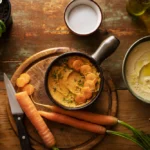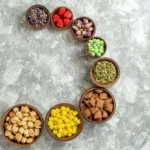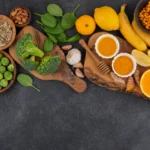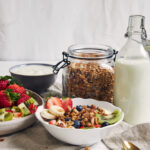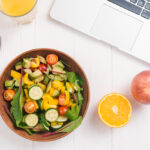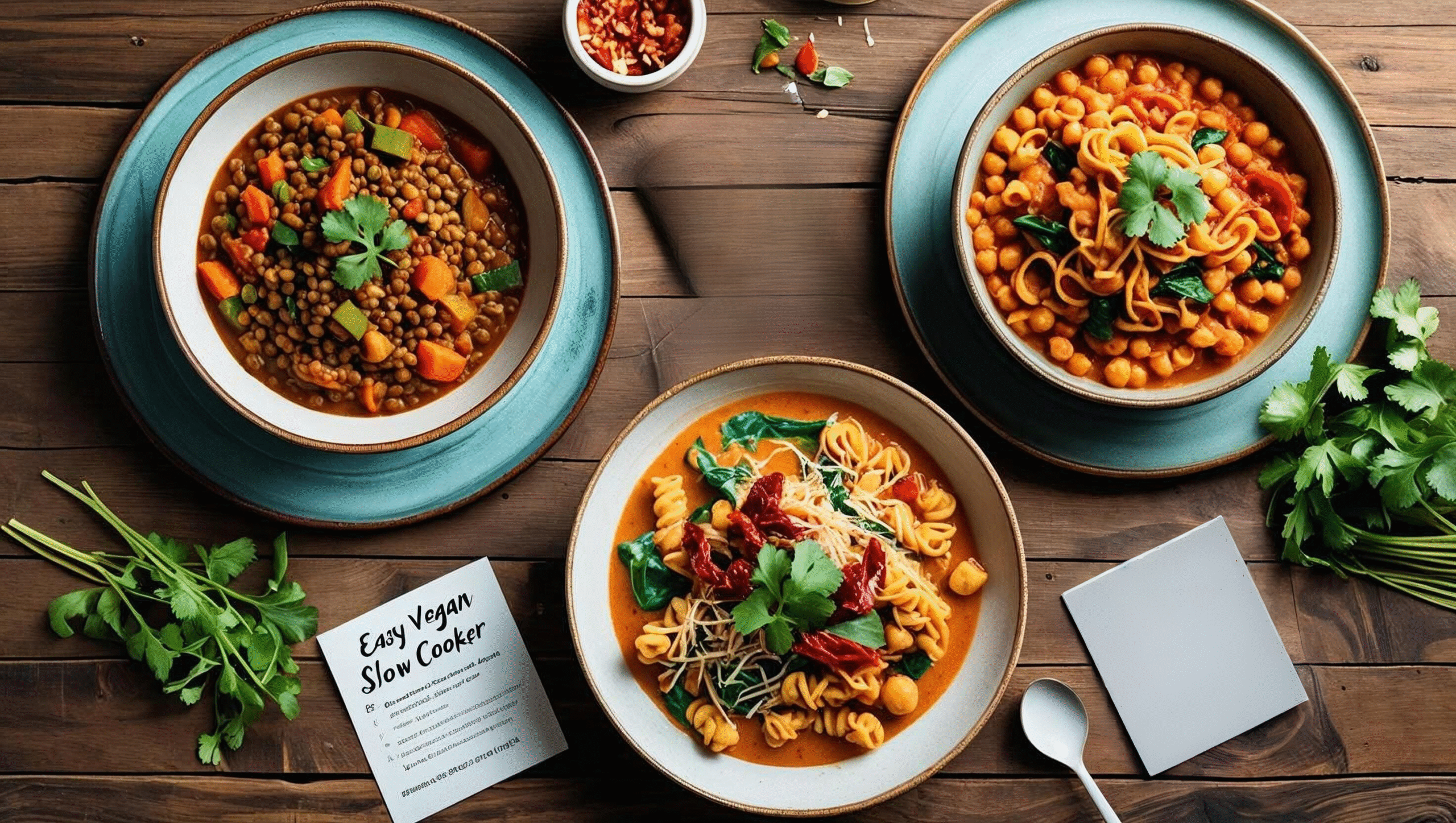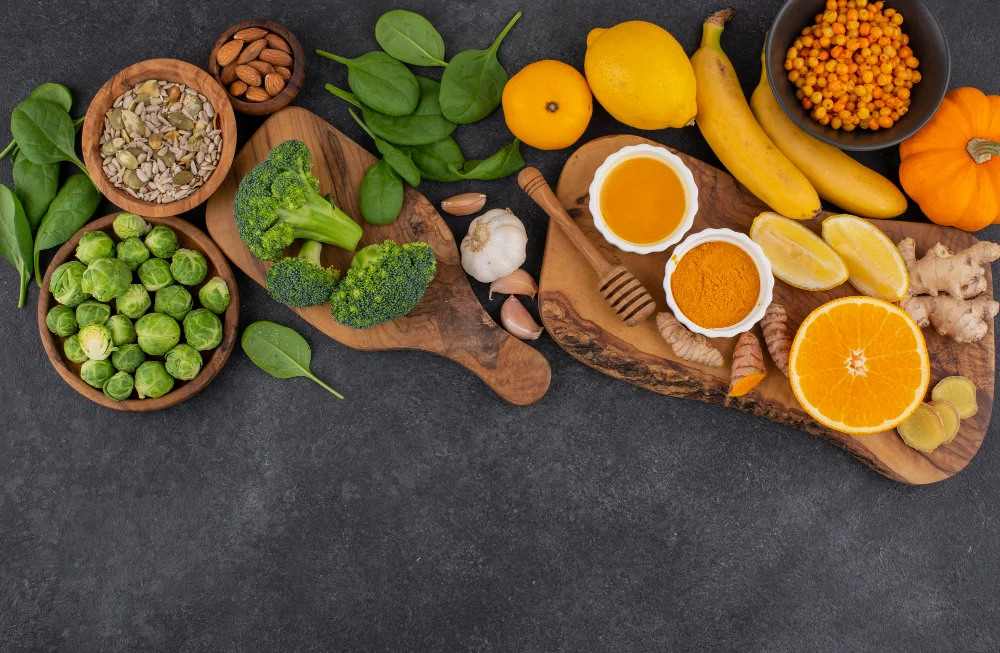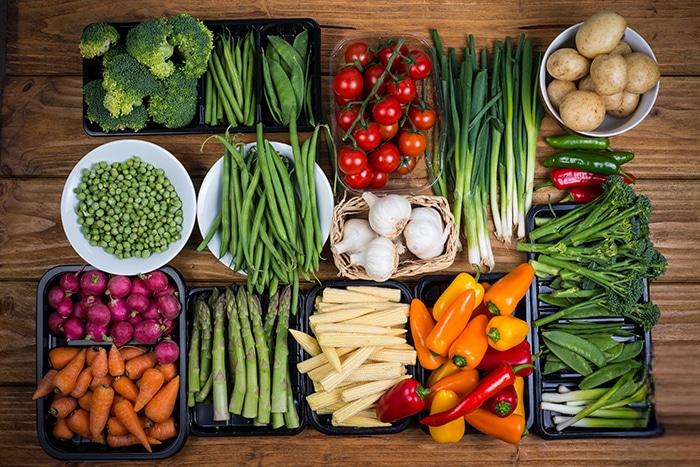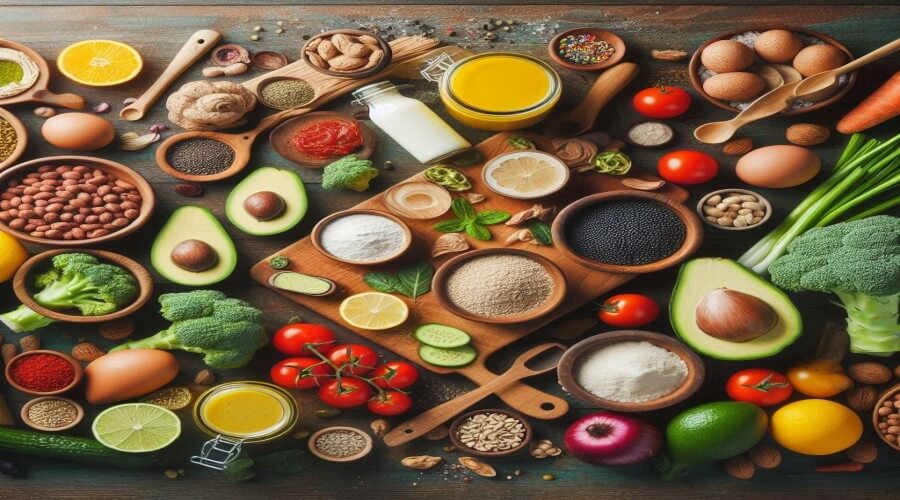In today’s busy world, the allure of a home-cooked meal waiting for you after a long day is undeniable. Slow cookers (often called Crock-Pots) have long been champions of convenience, allowing ingredients to simmer gently for hours, developing deep flavours with minimal hands-on effort. While pressure cookers are ubiquitous in many Indian kitchens for their speed, the slow cooker offers a different kind of magic, especially suited for tenderizing legumes and creating rich, flavourful vegan dishes. This guide explores easy vegan slow cooker recipes and the principles behind successful slow cooking, viewed through the lenses of nutrition, ethics, environment, and practical kitchen wisdom, offering inspiration adaptable for cooks everywhere.
LENS 1: Nutritional Analysis (Slow-simmered Health)

Slow cooking offers unique nutritional considerations compared to faster methods. When done well, it can be a great way to create nourishing vegan meals.
- Nutrient Retention – A Mixed Bag: The long cooking times at low, moist heat can be gentler on some nutrients than high-heat methods. Some B vitamins might be better preserved. However, water-soluble vitamins like Vitamin C and some B vitamins can still leach into the cooking liquid (which is consumed, mitigating loss) or degrade over extended periods. Pressure cooking, due to its speed, may retain certain heat-sensitive nutrients more effectively.
- Enhanced Digestibility: Slow cooking excels at breaking down tough fibers in legumes (dals, rajma, chana) and whole grains, potentially making them easier to digest for some individuals.
- Flavor Melding with Less Fat/Salt: The extended cooking time allows flavours from spices, herbs, and vegetables to meld deeply, often requiring less added fat (oil/ghee alternative) or salt for satisfying results compared to quicker cooking methods. The moist environment also reduces the need for added cooking fat.
- Balanced One-Pot Meals: Slow cookers make it easy to combine protein sources (lentils, beans), complex carbohydrates (potatoes, sweet potatoes, grains added later), and plenty of vegetables into a single, balanced meal, simplifying healthy eating.
- Maximizing Nutrition: To counter potential loss of heat-sensitive nutrients and texture in vegetables, add delicate ingredients like leafy greens (spinach/palak), fresh herbs (coriander/dhania), coconut milk/cashew cream, or a squeeze of lemon juice during the last 15-30 minutes of cooking or just before serving. Remember, Vitamin B12 must still come from fortified foods or supplements. How can you ensure your slow-cooked meal remains vibrant and nutrient-rich by adding fresh elements at the end?
Nutritional Deep Dive: Nutrient Considerations: Slow Cooking vs. Pressure Cooking
Both methods have pros and cons nutritionally.
- Slow Cooking: Longer exposure to moderate heat and water can lead to greater leaching/degradation of water-soluble, heat-sensitive vitamins (like C, Thiamin). However, minerals are generally stable, and digestibility of legumes might improve. Fat-soluble vitamins hold up reasonably well.
- Pressure Cooking: Shorter cooking times at higher temperatures. Less time for heat degradation, potentially preserving heat-sensitive vitamins better than long slow cooking or boiling. However, the higher temperature itself can degrade some compounds. Nutrient leaching into cooking liquid still occurs (but liquid is usually consumed).
- Conclusion: Neither method is universally “better.” Both are preferable to prolonged boiling in large amounts of water that is discarded. For vegan slow cooking, maximizing vegetable variety and adding fresh components at the end helps ensure broad nutrient intake.
Voice of Experience (Nutritionist): “Slow cookers are fantastic for making legumes digestible and building flavour with less added fat. While some vitamin loss occurs over long cooking, the fact that you consume the nutrient-rich cooking liquid is a plus. Balancing the meal with protein and plenty of vegetables, and adding fresh greens or herbs before serving, makes slow-cooked vegan meals a very healthy and convenient option.” – Dr. Ritu Singh, Clinical Nutritionist
LENS 2: Ethical Framework (Accessible & Mindful Meals)

The convenience offered by slow cookers has ethical dimensions related to accessibility, time, and mindful consumption.
- Democratizing Home Cooking: Slow cookers make preparing hot, homemade, nourishing vegan meals feasible for individuals with demanding jobs, long commutes, caregiving responsibilities, or limited energy/mobility. This promotes equity in accessing healthy, compassionate food, reducing reliance on potentially less ethical or sustainable convenience options.
- Value of Time: By minimizing active cooking time, slow cookers free up valuable personal time that can be spent with family, on rest, community engagement, or other pursuits – an ethical consideration of personal resource allocation.
- Reducing Food Waste: Slow cookers are excellent vehicles for using up leftover vegetables, slightly wilting greens, or odd bits of produce. They also facilitate batch cooking, making it easy to plan for and use leftovers effectively, thereby tackling the ethical issue of food waste.
- Mindful Anticipation: The ritual of setting up the slow cooker in the morning and returning hours later to a fragrant, ready meal can foster a sense of mindful anticipation and nurturing care, connecting the cook to the meal despite the hands-off process.
- Cultural Context: While pressure cookers offer speed often prioritized in modern Indian kitchens, slow cooking connects to a universal tradition of slow-simmered dishes, offering a different rhythm and potentially deeper flavour melding for certain preparations like Dal Makhani. How does the convenience of a slow cooker potentially allow you to uphold your values (e.g., healthy eating, veganism, less waste) more easily on busy days?
Hidden Benefits: Reduced Evening Stress
Knowing dinner is already cooking and will be ready upon returning home significantly reduces evening stress related to meal preparation, contributing positively to mental well-being.
Voice of Experience (Working Parent in India): “Between work and family, evenings are hectic. My slow cooker is a lifesaver. I can put dal or rajma on in the morning using dried beans, and come home to a delicious, healthy vegan meal ready for the family. It saves so much time and stress, making it easier to stick to homemade food.” – Sunita Agarwal, IT Professional
Critical Reassessment: Convenience vs. Connection & Energy
Does the ultimate convenience potentially disconnect us further from the hands-on process of cooking? And while wattage is low, does running an appliance for 6-8 hours negate the energy savings compared to a 20-minute pressure cooker cycle? These ethical considerations warrant thought (energy addressed further in Lens 3).
LENS 3: Ingredient Science & Environment (Efficient & Sustainable Cooking?)
Slow cooking relies on specific scientific principles and has a unique environmental profile compared to other methods.
- The Science: Slow cookers operate at low temperatures (simmer point, ~75-135°C or 170-280°F depending on setting), using moist heat over extended periods. This gently breaks down cellulose in plant cell walls and connective tissues (less relevant for vegan), tenderizing legumes (dal, rajma, chana) and root vegetables exceptionally well. Flavours from spices and aromatics have ample time to infuse and meld.
- Energy Efficiency: This is debated and context-dependent.
- Wattage: Slow cookers use very low power (typically 75-250 watts) compared to ovens (~2000-5000W) or even electric pressure cooker heating elements (~1000W).
- Time: They run for much longer (4-10 hours) than pressure cookers (minutes) or stovetop cooking.
- Overall Consumption (kWh = Watts x Hours / 1000): Cooking beans for 8 hours in a 200W slow cooker uses 1.6 kWh. Cooking them in a 1000W electric pressure cooker for 1 hour (including heat-up/cool-down) uses ~1 kWh. An oven uses significantly more. Conclusion: Slow cookers are generally more energy-efficient than ovens but potentially less efficient than modern electric pressure cookers for tasks like cooking beans from scratch, though more efficient than long stovetop simmering.
- Other Environmental Aspects:
- Water Conservation: Tightly sealed lids minimize evaporation, requiring less initial liquid than stovetop simmering.
- Lower-Impact Ingredients: Slow cooker recipes naturally favour beans, lentils, and vegetables – foods with significantly lower environmental footprints (land, water, GHG emissions) than meat-based stews or roasts.
- Dried Legumes: Encourages use of dried beans/lentils, which have less packaging and lower transport weight/emissions than canned goods. Considering both wattage and cooking time, how does a slow cooker fit into your goals for energy-conscious cooking compared to your pressure cooker or oven?
Market Transformation Map Suggestion: Sales trend data comparing slow cookers and electric multi-cookers (like Instant Pot) in the Indian market over the past 5 years, potentially showing faster growth for multi-cookers but continued relevance for slow cookers.
Voice of Experience (Energy Efficiency Analyst): “While slow cookers have low wattage, their long run times mean total energy consumption can exceed that of a quick electric pressure cooker cycle for the same task, like cooking beans. However, they are almost always significantly more energy-efficient than using a large electric oven for several hours. The best choice depends on the specific dish and prioritizing time versus potentially slightly lower energy use.” – R. Sharma, Energy Consulting
LENS 4: Everyday Practitioner’s Experience (Recipes, Tips & Techniques)

Here’s how to make easy vegan slow cooker recipes work beautifully, especially with Indian flavours.
Tips for Slow Cooker Success (Especially Indian Food):
- Sauté Aromatics First (Highly Recommended): While “dump and go” is possible, Indian dishes benefit hugely from sautéing onions, ginger, garlic, and blooming spices (whole and ground) in a separate pan before adding them to the slow cooker. This builds essential flavour depth. Many recipes from authors like Anupy Gupta (‘The Indian Slow Cooker’) emphasize this.
- Layering: Place hard root vegetables (potatoes, carrots) and dried beans/lentils at the bottom where heat is most consistent. Place softer vegetables and tomato products on top.
- Liquid Levels: Use less liquid (water, broth) than stovetop recipes, as very little evaporates. Start with less; you can add more later if needed.
- Timing Delicate Ingredients: Add quick-cooking vegetables (peas, bell peppers), leafy greens (spinach/palak), coconut milk/cashew cream, fresh herbs (coriander/dhania), and acids (lemon juice, tamarind) during the last 15-30 minutes of cooking to prevent them from becoming mushy or losing flavour/colour/nutrients.
- Whole vs. Ground Spices: Whole spices (cinnamon stick, cloves, cardamom) release flavour slowly, ideal for long cooking. Add ground spices (like garam masala) towards the end for brighter flavour, or bloom ground spices with aromatics at the start.
- Converting Recipes: To adapt stovetop/pressure cooker recipes: Reduce liquid by about 1/3 to 1/2. One hour on high or 1.5-2 hours on low in a slow cooker often equates to ~15-20 minutes at pressure in a pressure cooker (adjust based on ingredients).
- Cooking Dried Beans: Soak beans overnight for more even cooking. Ensure beans are fully submerged in liquid. Cook on high for 1-2 hours, then low for 4-8 hours (varies greatly by bean type/age/slow cooker). Lentils usually don’t need soaking and cook faster.
Easy Vegan Slow Cooker Recipe Ideas (Indian Inspired):
(Always sauté onions/ginger/garlic/spices first for best results)
- Slow Cooker Dal Makhani: Combine soaked whole black lentils (urad dal) & kidney beans (rajma) with sautéed aromatics/spices (including ginger, garlic, tomato puree, chili powder, coriander), water/broth in slow cooker. Cook on low 8-10 hours or high 4-5 hours until very tender. Stir in cashew cream or coconut milk, garam masala, kasoori methi during last 30 mins. Finish with optional tadka.
- Slow Cooker Chana Masala: Add sautéed aromatics/spices (including chana masala powder, cumin, coriander, turmeric), canned or pre-cooked chickpeas, diced tomatoes/tomato paste, water/broth to slow cooker. Cook on low 4-6 hours or high 2-3 hours. Stir in lemon juice and fresh coriander at the end.
- Slow Cooker Rajma Masala: Use soaked and/or pre-cooked kidney beans. Combine with sautéed onion-tomato-ginger-garlic masala base and spices. Cook on low 6-8 hours or high 3-4 hours until beans are tender and gravy thickened. Finish with garam masala and coriander.
- Slow Cooker Mixed Vegetable Korma: Layer potatoes/carrots at bottom. Add sautéed onion-ginger-garlic paste with korma spices (cardamom, cloves, cinnamon, coriander, turmeric). Add other vegetables (peas, beans, cauliflower), water/broth. Cook low 4-6 hrs / high 2-3 hrs. Stir in cashew/coconut cream and peas in last 30 mins.
What traditional Indian dish would you be most interested in adapting for the slow cooker?
Daily Impact: Morning Prep, Evening Meal
The biggest practical benefit is setting up the meal in the morning (or even the night before, keeping the pot in the fridge) and having a hot, ready-to-eat dinner with minimal evening effort – invaluable for busy schedules.
Voice of Experience (Indian Food Blogger using Slow Cooker): “Adapting Indian recipes for the slow cooker is fantastic for deep flavours, especially with dals like Makhani or Rajma. The key is always sautéing your onion-ginger-garlic masala base and blooming spices first – don’t skip this! Then let the slow cooker do the long simmer. Add creaminess and fresh herbs at the end.” – Richa Hingle (adapted principle from her work)

Alternative Approaches: Multi-Cookers
Modern electric multi-cookers (like the Instant Pot) offer both pressure cooking and slow cooking functions, providing flexibility in one appliance. The slow cook function on these may sometimes operate slightly differently (e.g., heating only from the bottom) than traditional ceramic slow cookers.
PERSPECTIVE INTERSECTION MATRIX
- Nutrition & Convenience (Lens 1 & 4): Slow cookers (Lens 4) make preparing nutrient-dense, legume-based meals (Lens 1) convenient, potentially improving overall diet quality for busy people. Adding fresh elements (Lens 4) addresses nutritional concerns (Lens 1).
- Ethics & Accessibility (Lens 2 & 4): The accessibility and time-saving nature (Lens 2) provided by slow cooker recipes (Lens 4) makes ethical vegan eating more feasible for diverse lifestyles. Waste reduction ethics (Lens 2) align with batch cooking/using leftovers (Lens 4).
- Environment & Method Choice (Lens 3 & 4): Choosing between a slow cooker or pressure cooker (Lens 4) involves considering energy efficiency trade-offs (Lens 3) alongside convenience needs. Both encourage using low-impact staples (Lens 3).
- Science & Flavour (Lens 3 & 4): Understanding slow cooking science (flavour melding, tenderizing) (Lens 3) helps practitioners adapt techniques (pre-sautéing, adding ingredients later) (Lens 4) for optimal taste and texture.
- Indian Context & Adaptation (All Lenses): Adapting slow cooking (Lens 4) for Indian cuisine involves considering traditional flavour building (Lens 1, 4), common ingredients (Lens 1, 3), ethical contexts (Lens 2 – accessibility vs tradition), and comparing efficiency with pressure cookers (Lens 3).
MISCONCEPTION ANALYSIS
| Misconception | Reality |
| Slow cooker food, especially vegan, ends up bland and mushy. | Mushiness results from overcooking delicate vegetables or using incorrect timing. Blandness comes from not building flavour initially. Sautéing aromatics/spices first and adding ingredients in stages yields deep flavour and better texture. |
| You can’t achieve authentic Indian flavours in a slow cooker. | While different from pressure cooking or stovetop methods, authentic flavours can be achieved by blooming spices, using fresh ginger/garlic, quality ingredients, and finishing touches like tadka (can be done separately) or fresh herbs. |
| Slow cookers are only good for Western dishes like chili or pulled pork. | They are incredibly versatile and excellent for many global cuisines, including Indian dals (Makhani, Rajma, Chana), curries (Korma, Tikka Masala adaptations), sabzis, and even staples like cooking beans from scratch. |
| Slow cookers consume a huge amount of electricity being on all day. | They use very low wattage. While total energy consumption depends on hours used, it’s often significantly less than using an electric oven for the same duration and can be comparable to or slightly more than efficient pressure cookers. |
| You just throw everything in, turn it on, and forget it. | While some simple recipes work this way, many dishes (especially Indian ones) benefit greatly from initial sautéing steps and adding certain ingredients towards the end of the cooking time for optimal results. |
KEY TURNING POINTS
- Invention of the Electric Slow Cooker (Naxon Beanery -> Crock-Pot, 1940s-1970s): Brought convenient, low-energy simmering to home kitchens.
- Marketing for Convenience (1970s onwards): Positioned as ideal for working families, enabling meals to cook while away from home.
- Adaptation for Global Cuisines: Home cooks and authors began adapting recipes beyond Western stews, including Indian, Mexican, Thai etc., for the slow cooker (e.g., publication of books like “The Indian Slow Cooker”).
- Rise of Online Recipe Sharing: Websites, blogs, and forums created vast libraries of slow cooker recipes and tips shared by users worldwide.
- Integration into Multi-Cookers: Inclusion of slow cook functions in popular electric pressure cookers (like Instant Pot) increased awareness and usage, though performance can differ from dedicated slow cookers.

SYNTHESIS & RECOMMENDATIONS
Easy vegan slow cooker recipes offer a fantastic pathway to convenient, flavourful, and nourishing plant-based meals. Excelling at tenderizing legumes and melding flavours over time with minimal active effort, slow cookers can be a valuable tool in any kitchen, including those accustomed to the speed of Indian pressure cooking. Achieving the best results, particularly with rich Indian dishes, often involves adapting techniques like sautéing aromatics first and adding delicate ingredients later. While mindful of energy use compared to pressure cookers, slow cookers provide significant savings over oven cooking and enable busy individuals to enjoy healthy, homemade, compassionate food consistently.
Recommendations for Vegan Slow Cooking Success:
- Sauté First (for Indian Food): For deep, authentic flavour in dals and curries, take the extra step to sauté onions, ginger, garlic, and bloom spices in a separate pan before adding to the slow cooker.
- Layer Smartly: Place root vegetables and beans/lentils at the bottom, closer to the heat source.
- Reduce Liquid: Use less broth/water than stovetop recipes, as little moisture escapes.
- Time Ingredients: Add quick-cooking vegetables, greens, coconut milk/creams, fresh herbs, and acids towards the end (last 15-30 mins).
- Choose Right Recipes: Start with recipes specifically developed for slow cookers or adapt simpler stovetop recipes first. Dals, beans, hearty stews work exceptionally well.
- Use Dried Legumes: Take advantage of the slow cooker’s ability to cook affordable dried beans and lentils perfectly (soaking helps).
- Don’t Forget B12: Ensure reliable B12 intake through supplements or fortified foods.
- Taste & Adjust: Always taste before serving and adjust seasonings, adding salt, spice, acidity (lemon juice), or fresh herbs as needed.
FURTHER AREAS OF EXPLORATION
- Slow Cooker vs. Pressure Cooker (Instant Pot): Which is Better for Indian Vegan Cooking?
- A Guide to Adapting Your Favourite Dal Recipes for the Slow Cooker
- Vegan Slow Cooker Breakfast Ideas (Steel Cut Oats, Dalia/Porridge)
- Making Large Batches of Beans/Chickpeas from Scratch in the Slow Cooker
- Troubleshooting Slow Cooker Issues (Too Watery, Undercooked Beans)
- Best Vegetables for Long Slow Cooking vs. Adding at the End

